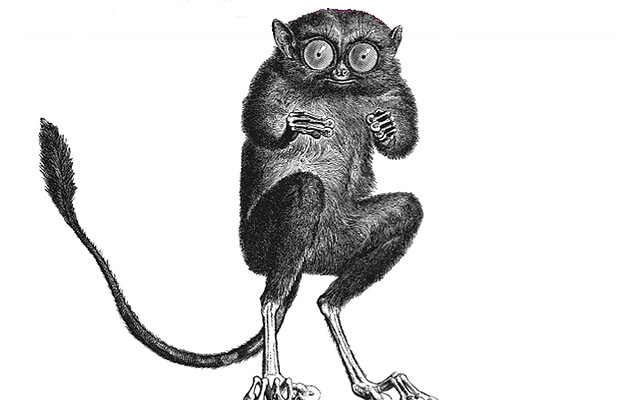The Philippine tarsier (Carlito syrichta), known locally as mawmag in Cebuano/Visayan and mamag in Luzon, is a species of tarsier endemic to the Philippines. It is found in the southeastern part of the archipelago, particularly on the islands of Bohol, Samar, Leyte and Mindanao. It is a member of the approximately 45-million-year-old familyTarsiidae,[3] whose name is derived from its elongated “tarsus” or ankle bone.[4] It is the only member of the genusCarlito, after the species was removed from the genus Tarsius.,[5] a new genus named after the conservationist Carlito Pizarras.[5][6]
Its geographic range also includes Maripipi Island, Siargao Island, Basilan Island and Dinagat Island.[2] Tarsiers have also been reported in Sarangani, although they may be different subspecies.
It was introduced to Western biologists during the 18th century.[7]The Philippine tarsier, as its name suggests, is endemic to the Philippine archipelago.[14] C. syrichta populations are generally found in the southeastern part of the archipelago. Established populations are present primarily on the islands of Bohol, Samar, Leyte and Mindanao. It has also been found on various isolated islands within its known range, such as Maripipi Island, Siargao Island, Basilan Island and Dinagat Island.[2]
The Philippine tarsier, as its name suggests, is endemic to the Philippine archipelago.[14] C. syrichta populations are generally found in the southeastern part of the archipelago. Established populations are present primarily on the islands of Bohol, Samar, Leyte and Mindanao. It has also been found on various isolated islands within its known range, such as Maripipi Island, Siargao Island, Basilan Island and Dinagat Island.[2]
The Philippine tarsier is a shy nocturnal[16] animal that leads a mostly hidden life. During the day, it sleeps in dark hollows close to the ground, near the trunks of trees and shrubs deep in the impenetrable bushes and forests. Tarsiers become active only at night, and even then, with their keen sight and amazing ability to maneuver around trees, they are very well able to avoid humans.[7]
It is arboreal,[12][16] habitually clinging vertically to trees and capable of leaping from branch to branch.
The Philippine tarsier is solitary. However, it is found to have either monogamous or polygamous mating system.[12]
(From Wikipedia, February 2015)




